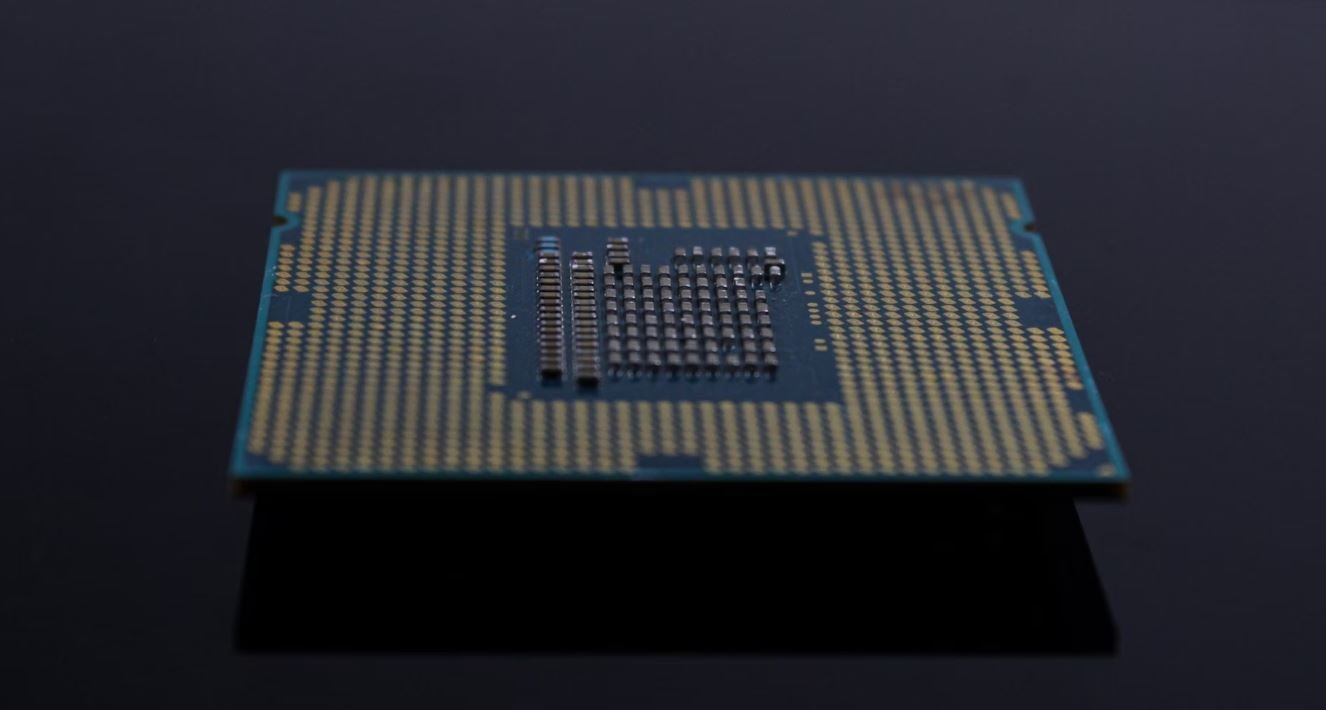Which OpenAI Model to Use
The selection of OpenAI models can be overwhelming, especially with the increasing number of options available. Each model has its specific strengths and use cases, and choosing the right one depends on your particular needs. This article aims to provide valuable insights on different OpenAI models to help you make an informed decision.
Key Takeaways:
- Understanding the unique strengths of each OpenAI model is crucial.
- Selecting the right model depends on your specific requirements.
- Consider factors such as computational resources and cost when choosing an OpenAI model.
1. OpenAI GPT-3
OpenAI GPT-3 is known for its remarkable ability to generate coherent and contextually relevant text. It has a vast knowledge base and can mimic human-like writing styles effectively. **This model is particularly useful in natural language understanding and generation tasks**, making it ideal for chatbots, content creation, and language translation applications. However, its large size and high computational requirements can be a limiting factor for some use cases.
2. OpenAI Codex
OpenAI Codex, powered by GPT-3, is specifically designed for programming tasks. It can understand and generate code in multiple programming languages, making it a valuable tool for software development and project automation. **With Codex, complex code generation becomes more accessible and efficient**, allowing developers to save time and improve productivity.
3. OpenAI DALL·E
OpenAI DALL·E is an impressive model that generates images from textual descriptions. Its ability to create original and imaginative visuals based on text prompts makes it an essential tool for artists, designers, and creative professionals. **DALL·E offers endless possibilities for visual storytelling and image generation**, expanding the creative boundaries in various industries.
Comparing OpenAI Models
| Model | Strengths | Use Cases |
|---|---|---|
| OpenAI GPT-3 | Coherent text generation, natural language understanding | Chatbots, content creation, language translation |
| OpenAI Codex | Code understanding and generation | Software development, project automation |
| OpenAI DALL·E | Image generation from textual descriptions | Art, design, creative industries |
Factors to Consider
- Compute Resources: Some models require larger computational resources than others. Ensure your infrastructure can handle the model you choose to use.
- Cost: The pricing structures for different OpenAI models vary. Evaluate the associated costs and determine what aligns with your budget.
- Task Specificity: Consider the specific task or problem you need to solve and choose the model that is best suited to address it effectively.
Model Comparison
| Model | Compute Requirement | Approximate Cost per Token |
|---|---|---|
| OpenAI GPT-3 | High | $0.06 |
| OpenAI Codex | High | $0.10 |
| OpenAI DALL·E | Moderate | $0.736 |
Final Thoughts
Selecting the most suitable OpenAI model for your needs requires careful consideration of its strengths, use cases, and associated factors such as compute requirements and cost. Evaluate the specific requirements of your task or project, and choose the model that aligns with your objectives and resources. **The right OpenAI model can significantly enhance your productivity and open up new possibilities in various domains**.

Common Misconceptions
1. Misconception: GPT-3 is always the best choice for any task
One common misconception is that GPT-3 is the best choice for any task or application. While GPT-3 is a powerful and versatile language model, it may not always be the most suitable option. Other OpenAI models such as ChatGPT or Codex might be more appropriate depending on the specific task.
- GPT-3 may not perform as well on certain specialized domains
- ChatGPT may be more suitable for conversational applications
- Codex could be a better choice for generating code or programming-related tasks
2. Misconception: OpenAI models can perfectly understand and respond to any query
There is a common misconception that OpenAI models can perfectly understand any type of query and provide accurate responses. While OpenAI models are highly capable, they are not infallible and may sometimes generate incorrect or nonsensical outputs.
- OpenAI models can generate plausible but incorrect answers
- They might struggle with ambiguous or poorly constructed queries
- Models may require additional fine-tuning for specific use cases to improve accuracy
3. Misconception: OpenAI models have complete domain knowledge
Another common misconception is that OpenAI models possess comprehensive domain-specific knowledge. Although they have been trained on a vast amount of data, they do not inherently possess real-world experiences or up-to-date information on every topic.
- Models may lack knowledge in niche or specialized domains
- They may not be aware of recent events or developments
- Domain expertise is required to validate and fact-check the model’s responses
4. Misconception: OpenAI models can replace human experts
There is a misconception that OpenAI models can replace the need for human experts in various fields. While they can assist and provide valuable insights, they cannot completely substitute human expertise, experience, and nuanced decision-making.
- Models do not possess human intuition or contextual understanding
- They may lack the ability to comprehend emotional nuances or empathy
- Human expertise is still necessary to validate and interpret the model’s outputs
5. Misconception: OpenAI models are one-size-fits-all solutions
OpenAI models are not one-size-fits-all solutions that can seamlessly handle any task or application without customization or fine-tuning. Depending on the specific use case and desired outcomes, customization or further training may be required to optimize the model’s performance.
- Models may need adaptation to specific industries or domains
- Additional training data may be necessary for improved accuracy
- Customization may be required to align with ethical, legal, or organizational guidelines

Which OpenAI Model to Use
OpenAI has developed a series of powerful language models that excel in various language-related tasks. When deciding which OpenAI model to use, it is essential to consider the specific requirements and goals of your project. In this article, we will explore 10 different models and their main features, providing you with valuable insights to make an informed decision.
Codex
Table representing the Codex model, which is known for its exceptional ability to generate code snippets and suggestions for various programming languages.
| Model | Main Strength | Usage |
|---|---|---|
| Codex | Code generation | Providing programming solutions |
GPT-3
This table showcases GPT-3, one of the most versatile models developed by OpenAI. It is capable of performing a wide range of natural language processing tasks, making it suitable for various applications.
| Model | Main Strength | Usage |
|---|---|---|
| GPT-3 | Versatility | Text completion, translation, summarization, etc. |
DALL-E
DALL-E is a remarkable model capable of generating high-quality images from textual descriptions. This table provides a glimpse into its main features and potential use cases.
| Model | Main Strength | Usage |
|---|---|---|
| DALL-E | Image generation | Creating unique visuals based on descriptions |
GPT-2
GPT-2, a predecessor of GPT-3, shares several characteristics with its successor. This table illustrates the key strengths and common applications of GPT-2.
| Model | Main Strength | Usage |
|---|---|---|
| GPT-2 | Robust language processing | Text generation, chatbots, language understanding |
CLIP
This table highlights the CLIP model, which possesses the remarkable ability to understand and relate images and text. It opens up possibilities for various image recognition and understanding applications.
| Model | Main Strength | Usage |
|---|---|---|
| CLIP | Image-text relation | Image recognition, object detection, image captioning |
ChatGPT
ChatGPT is specifically designed to facilitate conversational interactions. The table below provides an overview of its main strengths and possible use cases.
| Model | Main Strength | Usage |
|---|---|---|
| ChatGPT | Conversational capabilities | Chatbots, virtual assistants, customer support |
GPT-4
GPT-4 is a highly anticipated model that showcases several advancements over its predecessors. The following table explores its main strengths and potential applications.
| Model | Main Strength | Usage |
|---|---|---|
| GPT-4 | Continued advancements | Next-generation language processing tasks |
InstructGPT
InstructGPT can understand and follow instructions in natural language, catering to tasks requiring step-by-step guidance. The table below highlights its primary capabilities.
| Model | Main Strength | Usage |
|---|---|---|
| InstructGPT | Instruction understanding | Guiding users, recipe suggestions, procedural tasks |
GPT-Neo
GPT-Neo, a more lightweight version of GPT models, presents an excellent alternative for constrained environments. Consult the following table for further details on its strengths and potential uses.
| Model | Main Strength | Usage |
|---|---|---|
| GPT-Neo | Resource efficiency | Applications with limited computational resources |
Davinci
Davinci is a high-capacity OpenAI model that provides enhanced performance and accuracy for various language tasks. The table below summarizes its key advantages and applications.
| Model | Main Strength | Usage |
|---|---|---|
| Davinci | High capacity | Advanced language processing, complex tasks |
After examining the features and capabilities of these OpenAI models, it is important to assess your specific needs to select the model that best aligns with your project requirements. OpenAI’s wide range of models ensures that there is an optimal choice regardless of the task at hand. Consider the strengths outlined in the tables, and make an informed decision to leverage OpenAI’s powerful language models to enhance your applications.
Frequently Asked Questions
Q: What is the difference between GPT-3 and GPT-4?
A: GPT-4 is a newer version of the language model developed by OpenAI. It is expected to offer improved performance and capability compared to GPT-3.
Q: Can I use an OpenAI model for generating code?
A: Yes, OpenAI models can be used for generating code. They can assist developers in tasks like auto-completion, code synthesis, or generating code snippets.
Q: How can I fine-tune an OpenAI model?
A: OpenAI provides documentation and guidelines on how to fine-tune their models. It typically involves training the model on specific data and tasks to make it more specialized.
Q: Are there any limitations to using OpenAI models?
A: Yes, OpenAI models have certain limitations. They may produce biased or incorrect information, be sensitive to input phrasing, or generate plausible but incorrect responses. It’s important to review and verify the output.
Q: Can I use OpenAI models for commercial applications?
A: Yes, OpenAI provides commercial licenses that allow you to use their models and APIs in commercial applications. You can refer to OpenAI’s licensing and pricing information for more details.
Q: Which OpenAI models are best suited for natural language processing tasks?
A: GPT-3, gpt-2.5-turbo, and GPT-4 are the OpenAI models that are particularly well-suited for natural language processing tasks. They have been trained on extensive text data and can generate coherent and contextually relevant responses.
Q: How can I integrate OpenAI models into my existing applications?
A: OpenAI provides APIs that allow you to integrate their models into your applications easily. You can make API requests to the OpenAI platform, passing the necessary input and receiving the generated output as a response.
Q: Are OpenAI models capable of understanding multiple languages?
A: Yes, OpenAI models can understand and generate responses in multiple languages. However, their proficiency and accuracy might vary depending on the specific language and the model’s training data.
Q: Can I use OpenAI models for image recognition or computer vision tasks?
A: OpenAI models are primarily designed for natural language processing tasks and may not be the best choice for image recognition or computer vision tasks. There are other specialized models and frameworks available for such tasks.
Q: How can I provide feedback or report issues with OpenAI models?
A: OpenAI encourages users to provide feedback and report any issues they encounter while using their models. You can follow OpenAI’s guidelines for reporting bugs, providing feedback, or seeking support.




